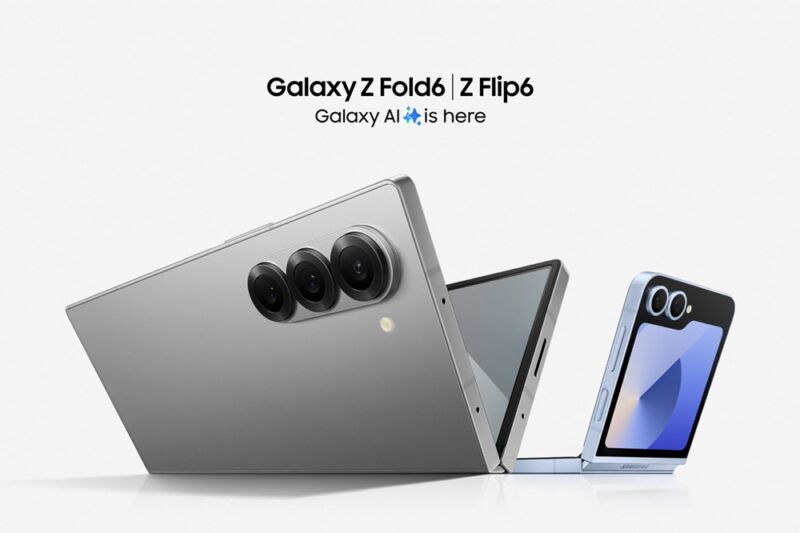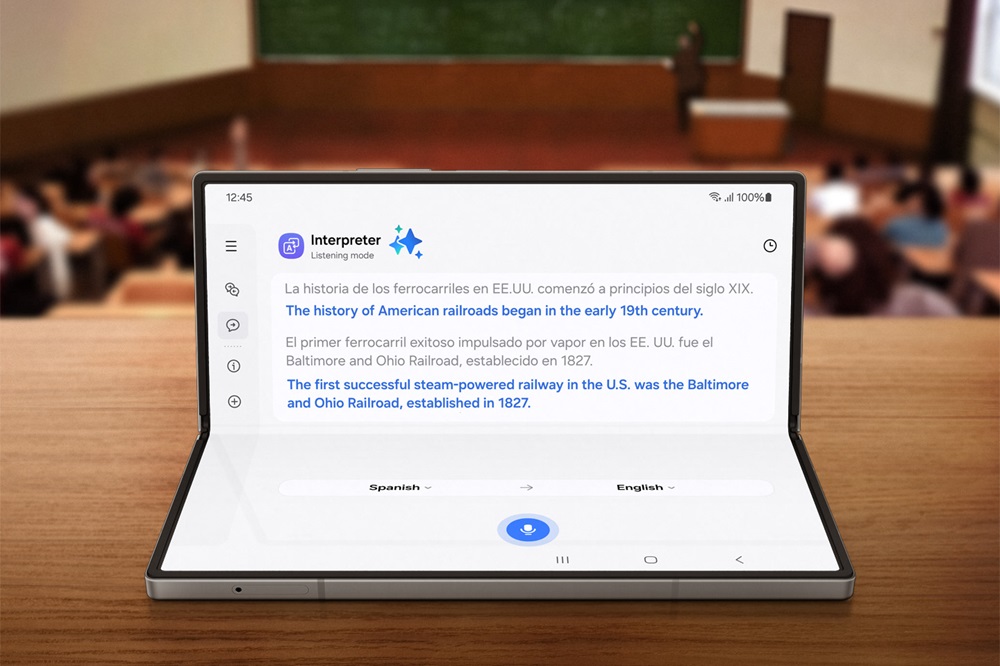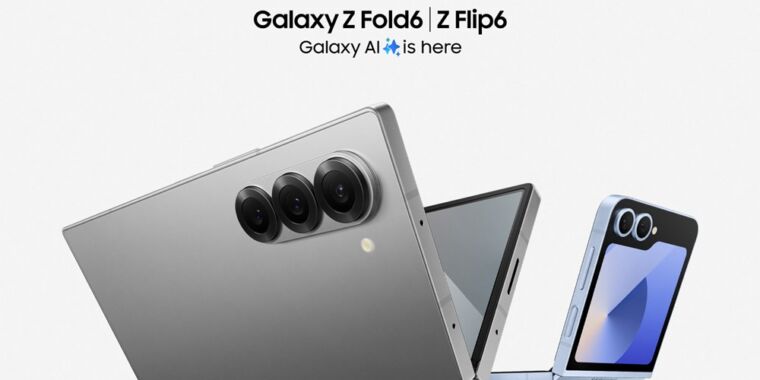
Samsung
Samsung, much like every large tech company on this planet, led its Galaxy Unpacked event with a focus on its own AI offering, Galaxy AI. There were folding phones, sure, but “Life Opens Up with Galaxy AI” was the first pitch of the event. The “Next Frontier of Mobile AI” is here, Samsung claimed, with “cross-device intelligence.” But, in a familiar tone, the company said its AI will be personalized for users, good for humanity, and empowering for creators.
Livestream of Samsung’s Galaxy Unpacked 2024 event.
But, of course, the latest foldables, wearables, and a brand-new Galaxy Ring are “the ultimate way to experience Galaxy AI.”

Samsung
Galaxy Ring and Galaxy Watch Ultra
Aiming to put its Galaxy AI onto your wrist and fingers, Samsung announced a seventh version of its Galaxy Watch, a rugged and larger Galaxy Watch Ultra, and the first version of a Galaxy Ring.
The Galaxy Ring ($400), at 7 mm wide and 2.6 mm thick, and 2.3–3 g in weight, competes with the Oura Ring. Samsung offers a sizing kit for its ring, which seems smart given the category’s size difference from standard rings and the likelihood of working out while wearing one.
The Ring tracks heart rate, skin temperature, sleep, and general activity, plus whatever AI-colored wellness Samsung cooks up, like “Energy Score” and “Wellness Tips.” As you might imagine, the Galaxy Ring is Android-only and a better experience when paired with a Galaxy phone. You can, for example, use a “double pinch” gesture to activate certain features—yes, a thing that the Apple Watch and iPhone already do, but, hey, old habits die hard.
The Galaxy Watch 7 and Watch Ultra are strikingly similar to their inspirations: the Apple Watch Ultra and the previous Galaxy Watch, respectively.
The Ultra model has 10ATM water resistance, an IP68 rating, a titanium shell, and a lot of familiar “orange means outdoors” colors. The orange “Quick Button” lets you get to the flashlight, swimming mode, or other features. There are power-saving modes that can get you 100 hours of battery life, or up to 48 hours of continuous exercise tracking. There’s an emergency siren that can blast out 85db from the watch, which will be fun for anybody to accidentally discover.
The Galaxy Watch 7 is a lot like its predecessor. Both it and the Ultra arrive with Wear OS 5 and One UI 6, a new 3 nm Exynos W1000 chip, 2GB of memory, and 32GB of storage.
They both also have heart and body composition sensors and new colors of LEDs that measure more things. One of those things is “Advanced Glycation End Products,” which Samsung says can help its AI suggest diet and lifestyle changes (and which Samsung is specifically not saying is a blood glucose measurement). The biggest new thing on both watches is sleep apnea detection, a first for modern wearables and cleared by the FDA, at least as something safe for you to consider, if not a guaranteed indicator.

Samsung
Galaxy Z Fold and Z Flip 6
The Galaxy Z Fold 6 ($1,900) and Z Flip 6 ($1,100) have the kinds of boosts from their prior models you might expect. There’s a Snapdragon 8 Gen 3 chip inside. The folding glass on both is supposedly stronger and now rated for IP48, which means dust resistance went from “X” (good luck) to “4” (1 mm and greater particles), which is still unfortunate at these price points, but that’s life on the folding edge.
The outward-facing screen on the Z Fold 6 got a smidge bigger (6.2 to 6.3 inches), though it has the same inner display. Its cameras are much the same (50 megapixel main, 10 megapixel telephoto, 12 megapixel ultrawide), though the ultrawide claims better low-light performance.
The Z Flip 6’s most notable upgrade is its 4,000 mAh battery and a vapor cooling chamber inside. The base model gets 12GB of RAM instead of 8, and 512GB of storage instead of 256GB on the base model.
Galaxy AI is here, even if you didn’t invite it
There are other products not mentioned here announced by Samsung today, including its Galaxy Buds3 and Buds3 Pro, which are wireless earbuds that will remind you of certain other very popular wireless earbuds. What Samsung really had to pitch today was how its own Galaxy AI was the connective tissue between all of them.
The screens on the Fold and Flip models are ideal for circling things to search them. The cameras can auto-zoom, the notes can be summarized, and translations, in particular, are everywhere. The watches and rings can track your health and suggest ways to make it better in all kinds of ways that merit a lot of disclosure about where all that data is going. Rick Osterloh, Google’s devices and services chief, showed up to give a kind of Gemini blessing to Samsung’s efforts.
Samsung seems to have revealed the least of any major tech firm about the origins, operations, and particulars of its AI platform. Its dedicated page to Galaxy AI offers just three vague sentences to the distinction between on-device and cloud-based AI processing, with one of them noting: “Most other features requiring a network connection utilize the cloud in some way.”
The most useful and direct aspect of the AI blitz is this item in the Galaxy AI FAQ: “Can I disable the AI features?” Samsung says you can choose to disable AI or make it on-device only and that there is a “master switch” for cloud-based AI processing inside the settings. It’s a reasonable thing for a company to offer after you’ve given over hundreds or thousands of dollars and perhaps would like it to work out its policies and strategies a bit first.
#Galaxy #Fold #Flip #Watch #Ultra #Ring #Samsungs #carriers,
#Galaxy #Fold #Flip #Watch #Ultra #Ring #Samsungs #carriers
